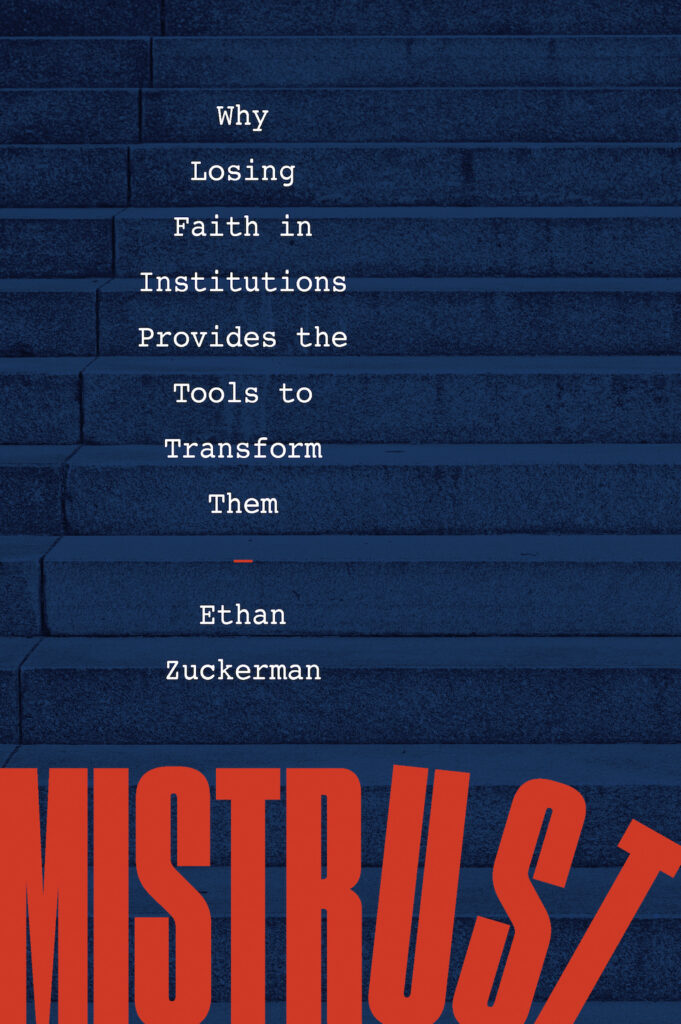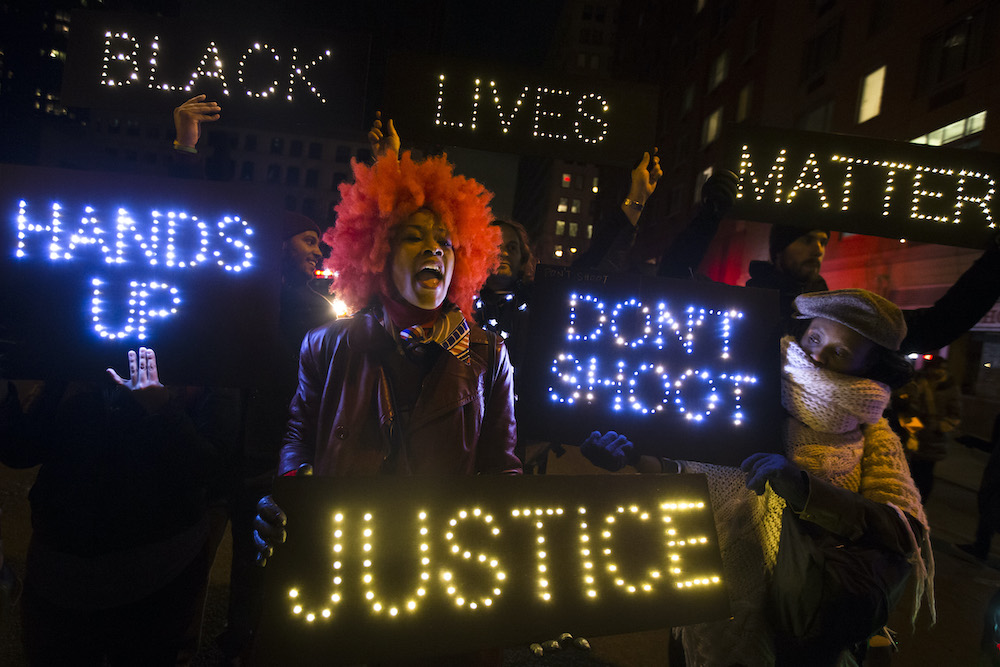
In “Mistrust: Why Losing Faith in Institutions Provides the Tools to Transform Them,” published January 19 by W.W. Norton, Ethan Zuckerman writes about how social movements can help solve the rampant mistrust in democratic institutions — including the press — that has come to dominate contemporary civic life. In this excerpt, Zuckerman, associate professor at UMass Amherst and founder of the Institute for Digital Public Infrastructure, explores our participatory media ecosystem and how it’s utilized to set agendas and garner mainstream media coverage of social movements.
In the last decade, major social movements have been unfolding in online spaces as well as in physical ones. That’s no coincidence: a critical element of movements like #MeToo and Black Lives Matter is a theory of change that demands that mainstream media pay attention to the issues they are raising.
This focus on media attention is not new—the civil rights movement relied heavily on television to bring images of the struggle in southern cities into homes across the nation. The local press in many southern cities wouldn’t cover protests against racism, so movement leaders targeted national newscasts, allowing Black southerners to learn about actions taken in nearby communities.
In a similar way, television and social media helped launch the Arab Spring. Activists in Sidi Bouzid used Facebook video to document their protests, which were uncovered by Tunisian media outlets. Tunisian activists in Europe then packaged the video and brought it to Al Jazeera, which broadcast it on its Arabic-language service, reaching an audience in Tunis who were otherwise unaware of the protests occurring only two hundred kilometers away. We can credit social media for helping to oust Tunisian president Ben Ali if only because other local protest movements, including one in Gafsa a few years earlier, died because they never received national attention.
In the past twenty years, a shift in the architecture of media has radically changed the relationship between producers of news and their audiences. We’re used to talking about the ways digital media has destroyed the economic model of journalism, but we’re less used to discussing the ways audiences now produce and disseminate media themselves. The political power that comes from amplifying media has changed the nature of political participation.
In the broadcast age, the relationship between media producers and citizens was straightforward. Companies both produced and distributed media, gaining revenue by selling ad insertions in the distribution stream. Broadcasters told citizens what to pay attention to and invited them, perhaps, to do something with the information they received. In a participatory media ecosystem, by contrast, different people produce and distribute news. The New York Times still has its printing press and delivery trucks, obviously, but the ability of a news story to reach a wide audience now depends heavily on digital media distributors, especially Google and Facebook. Because those platforms control the audience, they now also have a dominant position in advertising, capturing 90 percent of all the growth in digital advertising in 2017.
Individual citizens have two powerful roles within this new model. First, they can create their own media, which sometimes competes with professional media producers for attention and is sometimes amplified by those professionals. Second, they can influence the distributors by voting content up and down with their attention, helping amplify some stories and suppressing others. Both of these are possible forms of political activism, and they use a common method: agenda setting and framing.
Agenda setting, an idea advanced by the journalism scholars Maxwell McCombs and Donald Shaw, asserts that media’s power comes from influencing what issues appear in public discourse. The power of agenda setting is well summarized by the political scientist Bernard Cohen, who noted, “The press may not be successful much of the time in telling people what to think, but it is stunningly successful in telling its readers what to think about.”Media continue to have this power, but individuals and groups now have the possibility of telling the press what to pay attention to through social media.
Kony 2012 [the awareness campaign from the Invisible Children organization to draw attention to the crimes of Joseph Kony in central Africa] was an agenda-setting campaign. In the process of making Joseph Kony famous, it asked news outlets why they weren’t paying attention to the Lord’s Resistance Army and the suffering of children in northern Uganda. One of the missed opportunities of the campaign is that it didn’t demand increased coverage for sub-Saharan Africa in general, a systemic weakness of US media.
#IfTheyGunnedMeDown [a viral hashtag that emerged as a response to Michael Brown’s killing in 2014, highlighting the tendency of media outlets to use photos of young black men that perpetuate stereotypes] is a reframing campaign. When US media pay attention to the deaths of people of color at the hands of the police, they often focus on the potential culpability of the victims, choosing images that imply that they were dangerous or breaking the law. Patrisse Cullors, one of the founders of the Black Lives Matter movement, observed that “dead 17-year-old Trayvon was posthumously placed on trial for his own murder.” Campaigns like #IfTheyGunnedMeDown leverage the attention paid to these deaths but shift the frame.
My former lab, Center for Civic Media, studied the effects of reframing police violence by the Black Lives Matter movement. We examined 343 cases between 2013 and 2016 where unarmed people of color were killed by police. We found that deaths that occurred after Michael Brown’s death, the focus of a great deal of antiracist activism, were eleven times more likely to receive media coverage than deaths that preceded Brown’s. We also found a change in the way media outlets covered these deaths. Before Brown’s death, 2 percent of stories about unarmed people of color killed by police contained the name of another victim. After Brown, 22 percent did, showing that reporters were far more likely to cover a story not as an isolated incident but as part of a pattern of police violence against people of color. And while attention to the deaths of unarmed people of color waned by 2016, not to return until reactions to George Floyd’s death in 2020, our study suggested that the reframing was a lasting one, and that subsequent stories about these deaths were more likely to mention the larger pattern.
Reframing and agenda setting work, and the people who use these tools know they work. Campaigns try to go viral on social media not just to raise money but to gain mainstream media attention. Individuals and groups who’ve figured out how to hack the media feel a powerful sense of efficacy precisely because their efforts end up having rapid and measurable effects.
One remarkable aspect of the Trump presidency has been Trump’s own embrace of “meme magic,” the idea that pro-Trump imagery and video can motivate and mobilize voters. In July 2019 the president invited two hundred conservative media makers to the White House, including “Carpe Donktum,” who creates fake videos that Trump has shared online. Addressing the assembled crowd, Trump lauded them for producing advocacy materials that were better than what he could get from his own staff. “The crap you think of is incredible,” he crowed.
Have memes of Trump as a professional wrestler hitting the CNN icon with a chair helped cement his steady approval rating among his base? Or does making memes give some Trump supporters a sense of efficacy, a belief that they’re able to be part of their leader’s reelection campaign? Given the high visibility of Trump’s Twitter posts, which have driven numerous news cycles over the past four years, it’s probably unwise to dismiss “meme magic” out of hand.



